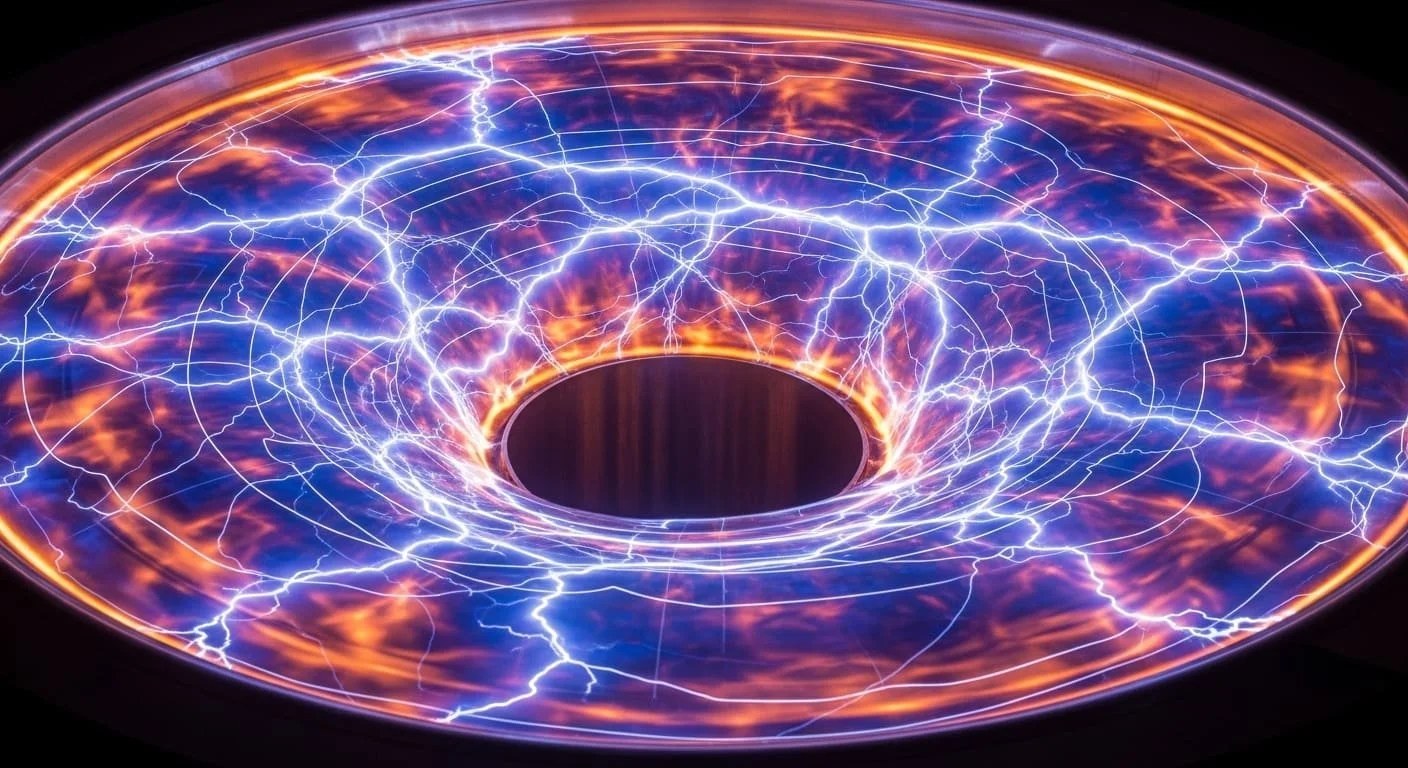The Fusion Accelerator: Fast-Tracking Fusion Commercialization with AI
In today’s world, it's hard to imagine life without the help of Artificial Intelligence. From simplifying daily tasks to powering complex research, AI has become the backbone of innovation, and this is no exception in the fusion industry. Engineers and scientists are now integrating AI to accelerate fusion development, and recently, NVIDIA and General Atomics unveiled an AI-powered digital twin of a fusion reactor, a breakthrough that could bring commercial fusion energy closer to home.
Fusion Meets AI
Fusion energy, long seen as the ultimate clean power source, replicates the same process that powers the sun, fusing light atomic nuclei to release immense amounts of energy without producing carbon emissions. But making it work on Earth requires controlling plasma at temperatures hotter than the sun’s core, a challenge that has kept commercial fusion “thirty years away” for decades.
To tackle this, researchers have increasingly turned to artificial intelligence and high-performance computing (HPC). AI can process massive amounts of experimental data, spot subtle plasma behaviors, and predict instabilities before they occur. In doing so, it transforms fusion research from slow, physics-only modeling to data-driven optimization, cutting down time and cost for reactor design and operation.
This new approach builds on previous work using AI for autonomous plasma control and reactor component optimization. We have also discussed how AI could speed up fusion deployment, read more about it here.
As NVIDIA stated, AI and accelerated computing are now helping scientists “simulate, analyze, and predict fusion performance at unprecedented speeds, turning what used to take weeks of supercomputing into real-time insight.
The Breakthrough of Digital Twin for Fusion
The milestone collaboration between NVIDIA, General Atomics, and the U.S. Department of Energy’s DIII-D National Fusion Facility has produced what they call an AI-driven digital twin of a fusion reactor, a full virtual replica that can mimic and predict real plasma conditions. The DIII-D facility operates the largest magnetic fusion research device (a tokamak) in the U.S.
Traditionally, modeling the turbulent motion of plasma, the hot, charged gas inside reactors, has required weeks of computation on supercomputers. Now, thanks to NVIDIA’s GPU-accelerated AI infrastructure and physics-informed surrogate models, these simulations can run in seconds.
The digital twin combines three pillars:
Physics-based modeling to anchor simulations in established science,
AI training on experimental data collected from DIII-D, and
GPU-accelerated supercomputing that enables rapid, high-fidelity simulations.
This fusion of AI and physics allows researchers to experiment virtually, testing reactor configurations, predicting plasma stability, and optimizing operational parameters, all without needing to run a single physical test.
How It Could Speed Up Commercialization
For decades, fusion research has been trapped in a cycle of slow experimentation and high costs. Building and testing new reactor designs often takes years, limiting how quickly the field can move toward commercial deployment.
By bringing AI into the equation, NVIDIA and General Atomics are effectively collapsing research timelines. What once required weeks of supercomputing time can now be performed in seconds, enabling continuous iteration, smarter design, and faster learning from each experiment. This development could reduce the need for many physical trials and help scale fusion testing facilities more efficiently. The “digital twin” approach also for autonomous fusion control, where AI systems can predict and adjust reactor conditions in real time, a critical step toward sustainable, commercially viable fusion energy.
The AI-driven digital twin also introduces new possibilities for visualization and interactive data exploration. By making complex plasma behavior visible and understandable, it can accelerate training for scientists and improve global collaboration in fusion research. Beyond performance gains, this project underscores how cross-sector collaboration is shaping the future of fusion. NVIDIA brings deep computing expertise, General Atomics contributes decades of plasma research, and the U.S. Department of Energy provides access to one of the world’s leading experimental reactors. Together, they illustrate how partnerships between AI companies and scientific institutions can bridge the gap between research and commercialization.
Glimpse of the Future
Building and maintaining a digital twin that remains accurate as reactors evolve is no small task. It requires constant calibration, massive computing power, and robust data pipelines from ongoing experiments. Still, this collaboration between NVIDIA and General Atomics signals a shift in how fusion science operates: from slow experimentation to agile, AI-driven development. It’s a reminder that the race for fusion is not only about mastering plasma physics but also about mastering the data and computation behind it.
If AI can compress simulation time from weeks to seconds, perhaps the journey from research to reality can accelerate just as dramatically. The fusion revolution may not just happen in laboratories — it might be coded, trained, and simulated into existence.



